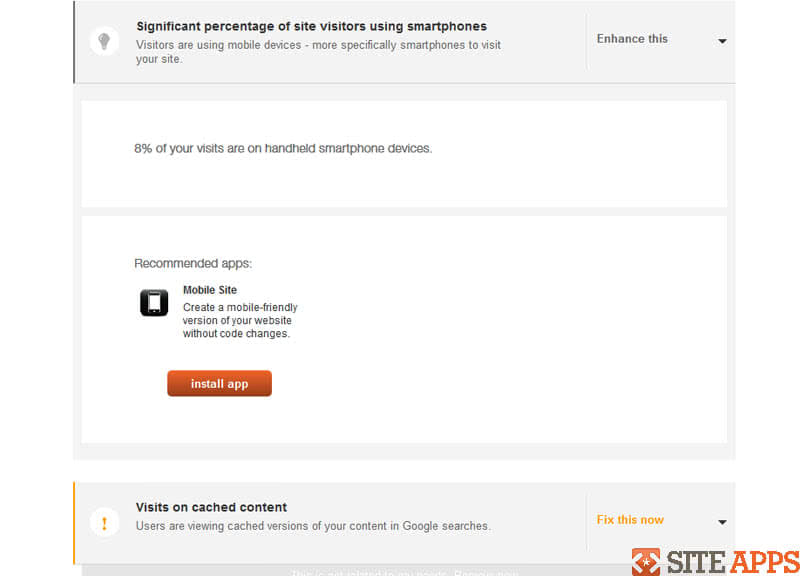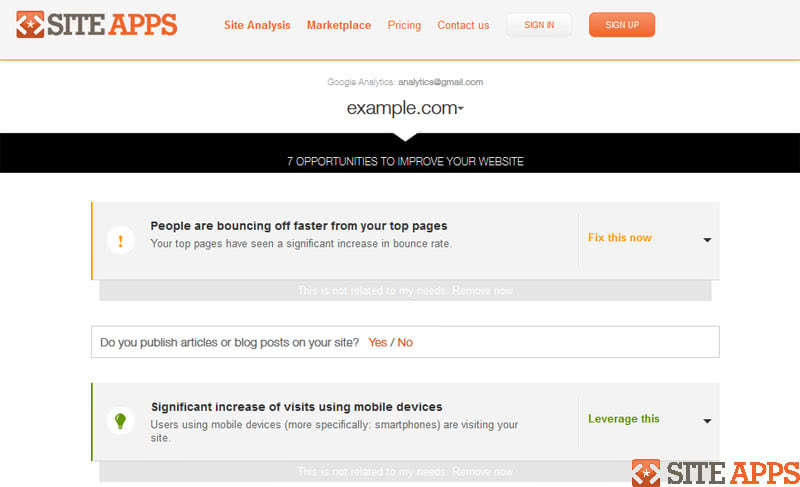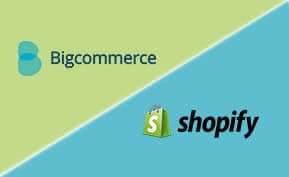Ecommerce
Marketing
Let's Talk SiteApps: Behind the Software with Predicta CIO

If you’re serious about your brand’s online presence then web design has to be a full-time concern, but what’s the best way of identifying what your needs are and finding the apps you need to bring those new features? Predicta, a Brazil-based web intelligence company, believes the answer is SiteApps, a web site app store combined with an engine that works in tandem with Google Analytics to scan your site data and provide recommendations on what you need. Predicta CIO Phillip Klien spent some time with us to explain more.
Looking for more information on specific ecommerce software? Take a look at our exclusive Top 10 Ecommerce software report as well as our comprehensive Ecommerce/Retail Management resource page.
What was the inspiration behind starting Predicta and developing the SiteApps tool? Was there a specific business need at the time that wasn’t being addressed, that you guys could address better?
SiteApps was actually was born from a pivot off another platform we had. It was an onsite behavioral targeting personalization platform called BTBuckets–behavioral targeting buckets. It was a self-service platform that allowed website modification through a simple JavaScript tag, letting you be able to create more personalized experiences.
We launched this platform in ’08 and it really kicked off because it was the first of its kind. We also got a lot of attention from Google. They promoted the platform a lot. And we realized as the customers signed on and the customers starting using the platform, they get really excited about the value proposition. They’d sign up. They’d implement the platform. They’d start creating what we call buckets to share segments and clusters. Then they’d come back to us–literally email us and say, “Hey, guys, great platform! Very easy. I created these really neat segments. Now how do I change my websites for these specific users?”
Then we’d say, well, you have to integrate that with another platform, an enhanced server or your content management system. The people said “Oh, OK, so I’ve got to do some technical stuff? Then it’s not gonna happen.” Many just gave up.
And then we talked to ourselves. Is the problem that we’re trying to create segmented user experiences? Or are we just trying to allow the site designers to personalize and create more engaging experience to their websites? That turned on the light bulb on top of our heads. Maybe instead of creating segmentation, what if we created a platform where marketing departments and business owners could actually–without technical knowledge–implement change on their website, whether it’s personalization or anything like that instead of just really creating prefabricated segments? That’s where SiteApps was born. What we wanted to do was take the way you can update your Facebook page for your business or a Yellow Pages entry and be able to do that for your websites.
Are there any specific industries or verticals that you target? Any specific business sizes?
Well, the condition for using our platform is you have to have a website. We are targeting companies and their websites. What I’m saying is we are focusing on B2B. So we are trying to work with companies who are trying to sell more or to generate more leads through their websites. We’re focusing our communication and offering towards businesses, but people can use it if they have a personal blog and want to use some of the apps too.
We’re trying to create incentives for businesses to generate more revenue and reduce friction. With regard to specific industries, we’re more concerned with client size. We’re really trying to help the small guy. Maybe it’s a small company where they don’t have a technology division; they have to outsource any changes they do to their website. The really small companies where it’s someone like a brother-in-law or your nephew who’s there to help you with your website, and you’ve got your hands tied up.
We’re trying to empower these people to get back control of their websites, start adding changes to them, begin creating an engaging channel. Remake your site into the principal part of your online communication strategy.
What’s your view on behavioral retargeting? Is that part of your focus or something tangential to what you’re doing? What you’re doing is enabling your clients to use user analytics as a driver for customizing their site itself–the nuts and bolts and actual interface and how they’re communicating with the clients on their site itself.
About the retargeting industry; there are definitely very advanced tools centered around how you can bring users back to your website after they’ve left. Technically, you could apply SiteApps for some of these benefits, but that’s not our focus. We’re really focusing on conversion, and optimizing it. Once the user reads your website, and comes to the understanding that you have what they’re looking for, you want to bring them down the [sales] funnel. That’s our main purpose. We work very well in tandem with other offerings like retargeting. For example, you can actually customize the website experience based on the banner the visitor clicked on.
Our approach is the app marketplace approach. A lot of people have smartphones. They’re used to the app model where if you have a problem to address, you go on the marketplace to see what alternatives exist. You install it on your phone. You start using it.
We’re trying to bring that concept to websites as well. For example, say I want to leverage my social media presence on my website through integration. I can look into the social media applications inside SiteApps and select maybe a specific app, whether it’s tied to Facebook or Twitter, and then try to identify how I can use these on my website.
There’s actually a very interesting metric from Adobe I can bring up, which I do in a lot of my presentations. It said that for every $92.00 a company spends in acquiring customers–bringing them onto the website–only $1.00 is spent on converting them. That’s a big divide. It’s still very important to bring your users to your website. But once they’re there, you have to make sure that you’re doing everything you can to really bring them to conversion, whether it’s a sale, a sign up or what have you.
Your vision statement says you’re looking to “reinvent the relationship between a company and its website.” How would you describe the current relationship that most companies these days have with their website? What’s problematic with that model?
I think the right word is “frustrating.” It’s also “powerless.” What we’ve discovered is a lot of companies will build a website and won’t change anything on the website for two, three, four years. And then they’ll go and do some big change to the website. Instead of taking small steps for optimizing and creating better user experience, they implement these big changes. I think that’s a big frustration.
Another thing is that you depend on someone else to do all these big changes for you. We’re empowering these business owners and telling them: “You do it. Spend five, ten minutes of your day changing something on your website and making it better.” In the traditional model sometimes they don’t even know what’s wrong. They’d have to contact a third party, either an agency, somebody they know or an outsourced party to implement some change. You do it.
Get in there, try it, see it before implementing it, since you can actually do live testing on a platform. Understand what you want do, and then do it. We actually don’t want to take out the middleman, because compared to agencies and other outsourcing parties we can only go so far. We can do small changes. But what we’re trying to do is get these business owners to realize that the website is fundamental for their strategy. It is where their customers are going, and with that in mind, they should treat it as something that can be changed.
I’m sure there must be people out there who look at a service like SiteApps and wonder what benefits they get compared to traditional means of getting information or feedback from my user base–feedback forms or community forums, etc. Is that something that you have to address?
That’s a very good question. If you ask me, I think that website optimization is 50 percent a science. The other 50 percent is really trial and error and testing things. We’re a marketplace for apps. Although we have an analytics section to our platform that runs through your site, we see that as just creating instant utility, making clients more familiar with the platform and how to best use it. It’s not a fundamental.
A lot of our clients get into our platform already knowing the pain points that they have. Sometimes they don’t need the analysis part. They don’t need to know this is what’s happening on our website, because they already have that data. Or they know that this is something that they’re missing and they’d like to add this or that specific feature.
Another thing is that sometimes we see applications that are submitted to the marketplace addressing problems we hadn’t even thought of. The real reason we are trying to tap into the analytics is because we think it’s going to be much more important in the future. Right now, it’s a good way of maybe showing these business owners things that they weren’t aware of.
What inspired you to go with a marketplace model and letting the user base also develop their own applications and extensions?
Our objective is to be a platform. I think that the best ideas are going to come from the developers themselves. So we try to create a very simple platform for developers.
As you know very well, everybody’s running after developers for their own marketplace. You have situations where some platforms are literally driving developers. I read an article recently about a BlackBerry offering for developers: if your app was on the BlackBerry market and you had something like more than one thousand downloads, they’d actually pay you $10,000. I read somewhere else that Microsoft was actually giving away phones to anyone who submitted an application on their Windows 8 mobile platform. We’re a fairly medium-large size company here in Brazil. SiteApps belongs to Predicta, which was funded by the second biggest media group here in Brazil, but even then it’s very hard to compete with these other platforms for developers. The way we are doing it is we have some advantages in our platform.
For example, we don’t have any SDK. If you’re a designer or if you’re a programmer for the Web, you can start immediately developing for SiteApps because we use HTML and JavaScript. The second advantage we have is that there are literally hundreds of thousands of designers there. There are other platforms where you can show off you work. You can put it on Dribble or what have you, but it’s very hard to monetize. How are you going to make money with that? If you get that same code, you apply it to our platform and you apply a monthly charge or a one-time charge, $2-$3. Our platform will allow any website anywhere to implement that without any technical knowledge. I think that’s very attractive to developers.
I’m not going lie to you. We think that we definitely have to generate the scale. We have to have hundreds of thousands of website to really generate this attraction for developers. How we’re solving that problem right now is we actually have an app development team in our office developing some of these critical apps in-house. Hopefully, we will be able to explain the value proposition we have for these developers, but for now our focus is to create the ultimate experience for the website owners, for small businesses.
How does being a Brazilian company inform the way you run your business? Are there any specific benefits or challenges it imposes on you?
Have you heard of another Brazilian technology company, Mark?
I can’t think of any off the top of my head, no.
That’s pretty much the answer we get from everybody else. We’re very proud to be a company who can offer a world-class platform with something that’s not available in the marketplace right now.
The project name for SiteApps, before we decided on Siteapps, was Tijolo. And tijolo actually means brick in Portuguese. It’s a play on the BRIC acronym for Brazil, Russia, and China–the emergent countries. We wanted to have the first world-class software developed in Brazil. Although we’re not known for our software–we’re much more known for our football and for our samba–we have very great developers. A lot of Brazilians work at Google and Facebook. One of Instagram’s founders was Brazilian. Mark Zuckerberg’s co-founder, Eduardo Saverin, was Brazilian, too. That’s something you want to showcase. We’re proud to be Brazilian.
Nowadays the world is flat. You can have world-class service whether it’s developed in Israel, in the Valley, or in São Paulo in Brazil. Maybe a couple years ago that was a lot harder–people would say, “Really, Brazil? I haven’t heard of you.” But our economy is getting a lot of attention in the media. A lot of Brazilian companies are pursing partners and taking a big interest in the US economy.
We’re starting to get some attention. And we’re starting to be known for more than just football and samba. We’re much more than a Brazilian company. We’re a company of the Web. We believe in what the Web has to offer, what the Internet has to offer. We work people out of the Valley and up in Asia. I think that much more than just being a Brazilian technology, we definitely are working on asking where are the best resources? What are the best software tools? What are the best platforms that we can help leverage these small businesses to improve their website?

What’s the biggest challenge you’re currently facing either businesswise or technology-wise, and how are you addressing it?
I think the biggest challenge we have now is where do we start? Do we start with a specific vertical? Should we start with a specific problem? The marketplace is so general; there’s so many different users, at that scale it’s a challenge to figure out, say, what the killer apps we’re looking for are. Should we work with a specific market? Should we work with specific channels?
So our biggest challenge right now is deciding where to focus our communication strategy for our platform. There are millions of small-and-medium businesses out there and different ways to reach them. It’s very hard. It’s a very trickle-down market to reach. How can we show them that there’s something now that they can really use to enhance their website?
Where do you see your segment going in the near future? What sort of challenges and opportunities do you see coming down on the horizon?
We’re very excited about small ecommerce shops. It seems like you have a lot of companies, especially in emerging markets, who are creating their small ecommerce shops. Whether they’re selling through Etsy or whether they’re creating a little shop in Shopify, we see a lot of these really small companies that sell maybe a couple hundred of their product on the Web and using the Web as a primary sales channel.
These people need a lot of help. Filling out the orders and delivering their goods is hard enough. We want to help them really embrace what the Web has to offer as a sales channel, make the user experience as agreeable as possible and really convert them. So we’ve been spending a lot of time developing applications that work for small ecommerce shops. What are their pain points? What are they looking for? Who are their clients? And how can we help them sell more online? We’ve been doing a lot. If I had to choose a specific vertical or specific industry or specific type of website that we’ve been dedicating a lot of efforts towards, this is it.
Is it a challenge reaching out to that segment? A shop on Etsy or Shopify is typically one or two people. I’d think a lot of them would feel overwhelmed by the idea of investing in digital marketing applications, digital marketing solutions.
That’s a very good question. Sometimes these shops want to do specific enhancements on their websites that they don’t know how to do by themselves. They have to outsource it. That’s when they see the value of an app marketplace.
For example, say I want to integrate Pinterest on my website because I see that a lot of my clients are on Pinterest. How can I do that? Oh, here’s a site that allows me to do that in one click with no technical knowledge. We’re trying to convince these vendors that we can show them how to boost their website themselves and dedicate maybe five or ten minutes a day to improving the experience.
What we usually see in our customer lifecycle is that a lot of these small companies start using the platform for very simple purposes, social media integration for example. And then they start driving towards more advanced uses. They start feeling more comfortable. I think it’s a natural evolution just like when you first bought your iPhone–I mean, one of the first applications was a flashlight you could install on your phone. Nowadays, you have very complex BI applications on a phone. I think that’s a natural maturity cycle.
There are some very significant changes you can apply that generate a lot of revenue, too. We have one case where a very simple application was installed. It’s an application that allows customers to like your web store on Facebook. When they like the website on Facebook, you give them a discount code. And they can apply a $5 off discount club. One of our small companies started using this application. At the time they had a couple hundred likes on Facebook and maybe five or ten new likes a week that they get just from their client base.
They installed this application where they literally exchanged discount codes for likes. All of a sudden, they went from one or two likes a day to over a hundred likes a day. They really started generating a lot of traffic.
What are your goals for this year in 2013? And how are you planning on reaching them?
I think that our biggest goal in 2013 is to let people know there’s a marketplace for website applications, to reach these small business owners and say hey, there’s a new way that you can enhance your website and one that you don’t need an external party to do.
What we’re doing is using a channel strategy. We’re creating partnerships with website hosting providers and other companies who aggregate hundreds of thousands or even millions of websites to explain to them that there’s a new way that you can actually optimize their websites.
I think we’ll be on the right path if we do this and we get the attention and the attraction of these mom-and-pop websites. We don’t have any limited geographical focus, but we believe that small-and-medium businesses are more mature in Europe and the United States. I think they do a very good job.







